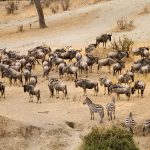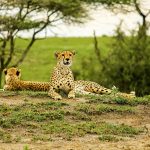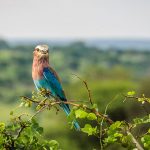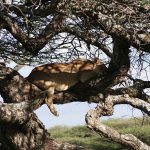Tarangire National Park is often referred to as the “Baobab Capital of the World”. The park is 75 miles from Arusha, approximately a 2-hour drive on a tarmac road, and is one of Tanzania’s larger parks covering over 1,100 square miles. Tarangire is renowned for its wild landscapes and diverse habitats.
The Tarangire River, from which the park derives its name, is the only permanent water source within 1,600 square miles of protected wildlife area. In addition to numerous animals, the park has over 550 recorded species of bird and the highest recorded number of breeding bird species of any habitat in the world.
[smart-grid row_height=”240″ mobile_row_height=”170″ last_row=”justify” margins=”15″ captions=”false” title=”false”]
[/smart-grid]
Tarangire is most famous for its elephants. There are 3,000 resident elephants in the park during the green season (Nov-May) and another 3,500 elephants migrate into the park during the dry season (July-Oct.).
Elephants can begin to migrate into Tarangire as early as May and June as they follow the long rains and love the tall swamp grass found especially in the swamps of Tarangire National Park.
Elephant-watching is excellent in Tarangire all year round, as is bird-watching. During the dry season, herd animals of all kinds (elephant, wildebeest, zebra, gazelle and antelope) migrate from the surrounding areas in search of the water found inside the park.
Tarangire is home to the greatest concentration of wildlife outside of the Serengeti ecosystem. During the dry season, giant rock pythons leave the swamp areas to avoid being stepped on by herd animals and live in the trees on the edge of the swamps. These are amazing creatures and some of the most unusual wildlife-viewing is of rock pythons killing large animals of all kinds!
Tarangire is also home to the last remaining packs of wild dogs in northern Tanzania. The wild dogs remain an extremely elusive find, but in the last few years one pack has bred successfully and has been seen in the Silale and Gursi Swamp areas of the park.






